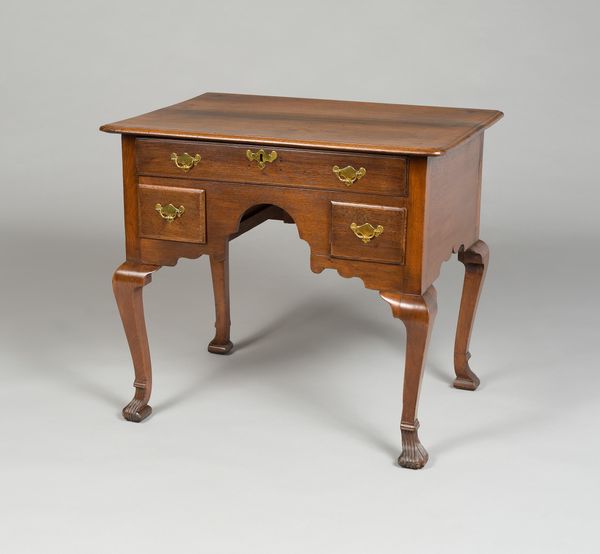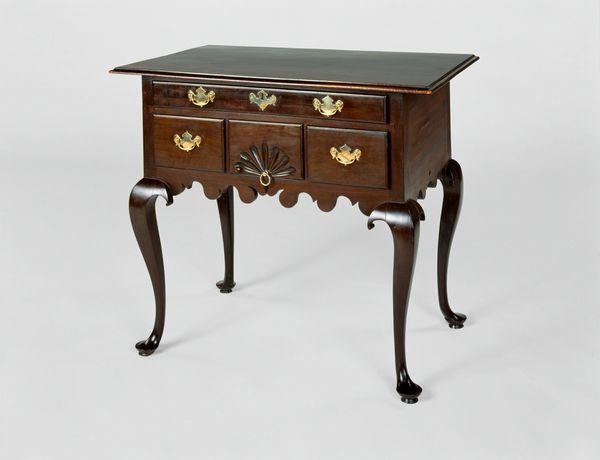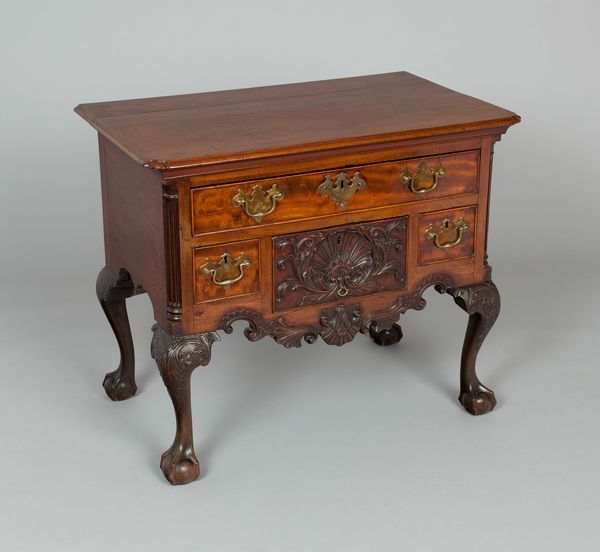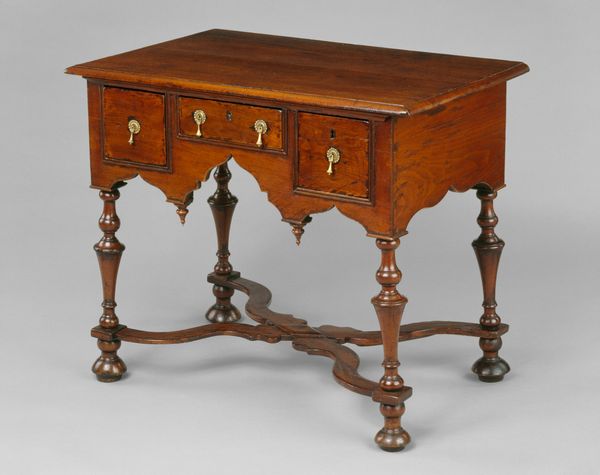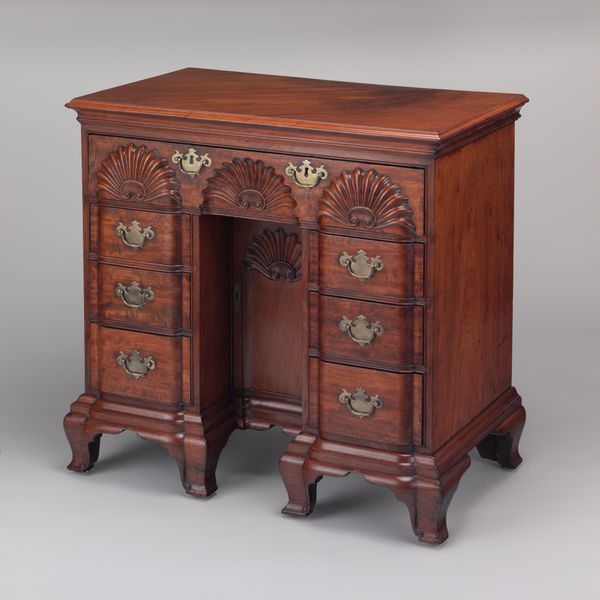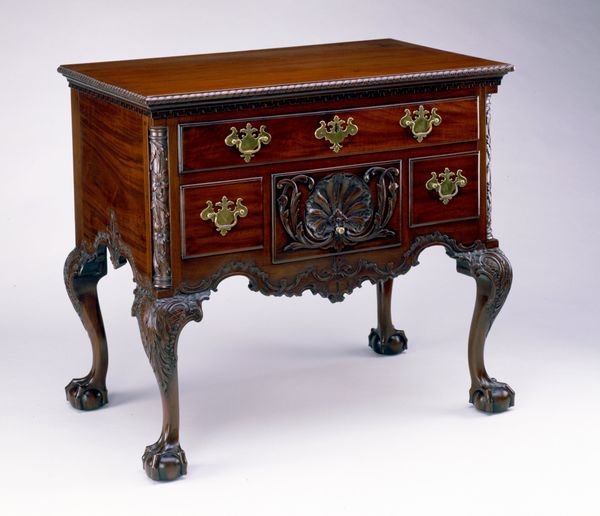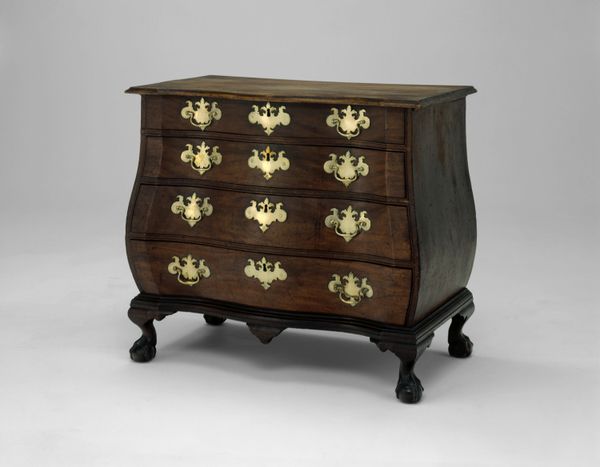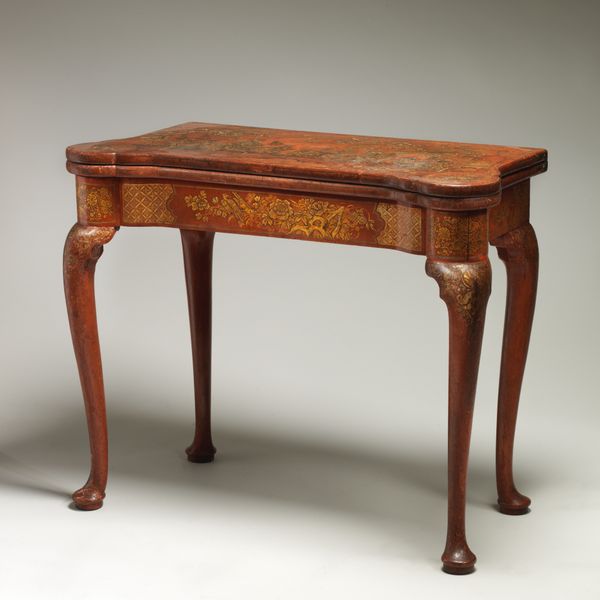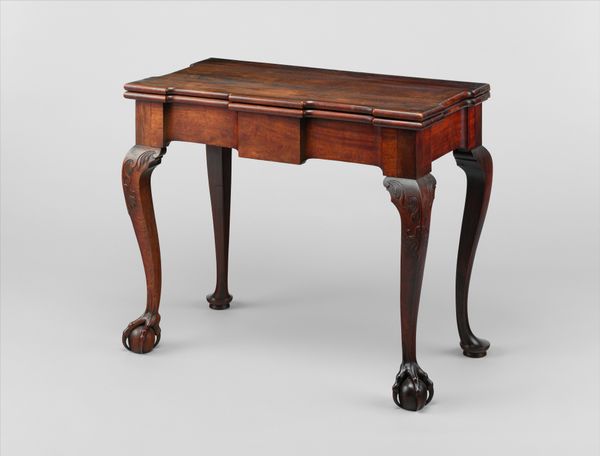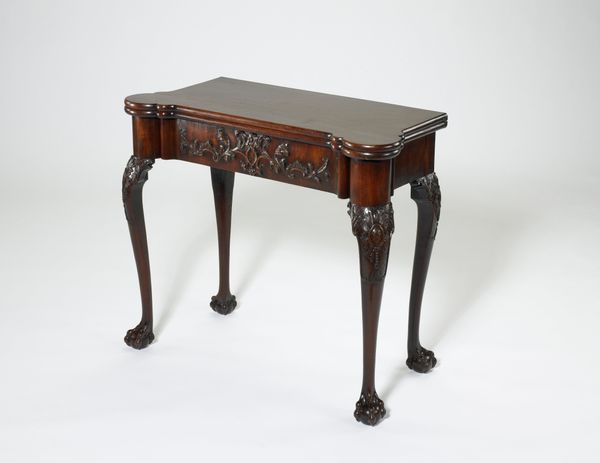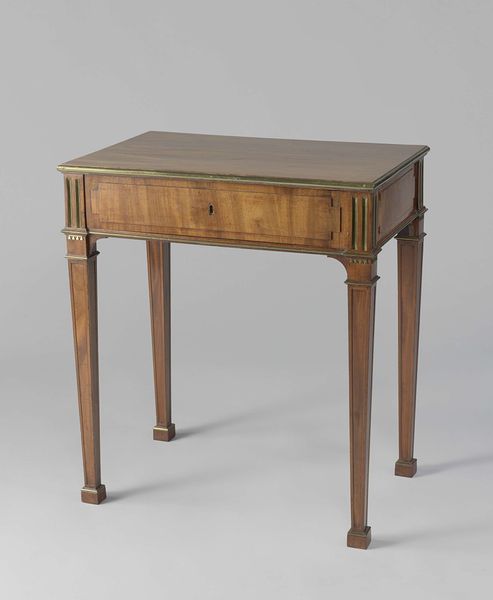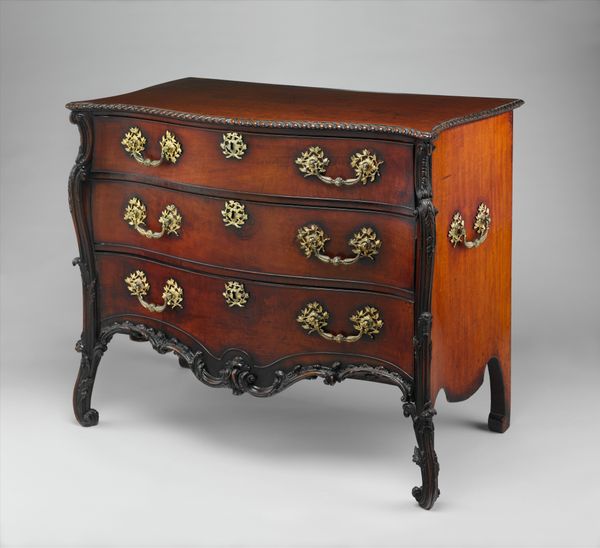
Dimensions: 74.3 × 89.2 × 57.3 cm (29 1/4 × 35 1/8 × 22 1/2 in.)
Copyright: Public Domain
Curator: Let’s turn our attention to this "Dressing Table," likely crafted between 1755 and 1790, now residing here at The Art Institute of Chicago. Made of wood, it's a superb example of Rococo decorative art. Editor: It’s smaller than I expected! Almost dainty. I'm immediately drawn to the details; the curves of the legs, the shell carvings. It feels… opulent, almost excessively so. Curator: Indeed. This type of furniture speaks volumes about the social stratification of the period. Items such as this would be owned and seen only by the wealthier individuals of the period. Consider that the creation of an object like this wasn't simply about utility; it was a display of status. Editor: And what a statement! It is not just functional furniture, it is declaring itself in the space with the lion paw feet. Did the design choices like the sea shell have some particular cultural meaning at the time? Curator: Certainly, Rococo design frequently incorporated natural elements. The seashell motif, for instance, connects to themes of nature, luxury, and the sea – a status symbol related to maritime trade and global awareness. Beyond this specific object, its significance resides in representing class privilege and conspicuous consumption. The furniture reflects the priorities of a society deeply unequal. Editor: It brings up some complicated feelings. The craftsmanship is undeniable, but it also prompts reflection on labor conditions, and the immense disparities it embodies. What narratives are obscured when focusing on the beauty of its ornamentation alone? Curator: Exactly. And this extends beyond this single object. Understanding how the display of these items in museum settings can either perpetuate historical biases or promote a more nuanced view becomes key. These objects can foster discussions on class, race, and gender through object-based learning. Editor: That feels so important. Analyzing pieces like this 'Dressing Table' can allow us to address past inequalities in fresh ways, encouraging conversation on who benefitted and at what cost. Curator: Absolutely, moving forward, integrating these intersectional readings are vital in modern presentations.
Comments
No comments
Be the first to comment and join the conversation on the ultimate creative platform.
